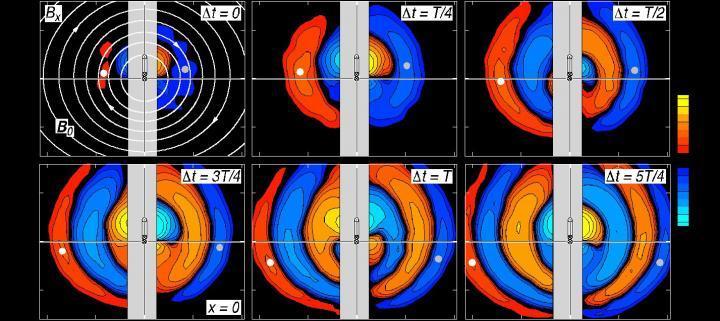15.08.2018

Scientists at the University of California, Los Angeles present new research on a curious cosmic phenomenon known as "whistlers" -- very low frequency packets of radio waves that race along magnetic field lines. This first-of-its-kind study, appearing in the Physics of Plasmas, from AIP Publishing, provides new insights into the nature of whistlers and space plasmas -- regions of energized particles trapped by Earth's magnetic fields. These studies could one day aid in the development of practical plasma technologies with magnetic fields, including spacecraft thrusters that use charged particles as fuel.
"We have discovered new effects of these so-called whistler waves," said Reiner Stenzel, an author on the paper. "These new laboratory studies will help expand our knowledge on this intriguing electromagnetic phenomenon and suggest new applications and possible inventions."
Whistler waves were first detected in the early 1900s. They were found to come from lightning interacting with Earth's magnetic fields. As they traveled through Earth's ionosphere and magnetosphere, whistlers with low tones propagate more slowly than the higher frequency whistlers. As a result, simple radio receivers were used to listen to the radio waves, and the falling pitch sounded like a whistle.
Stenzel and his co-author, Manuel Urrutia, studied the growth, propagation and decay of whistler waves in nonuniform magnetic fields in their laboratory. They discovered that these waves behaved differently than predicted by an 80-year-old theory.
These laboratory studies involved creating whistler waves with magnetic antennas inside a plasma-filled chamber. The researchers then studied the behavior and propagation of these waves in 3D space with a movable probe. This enabled the team to study how these waves propagate through 3D space as a function of time. They could also study the waves under a variety of conditions, including how they behave when exposed to both straight and circular magnetic field lines and magnetic null points -- regions where there was no field at all.
"Our laboratory experiments reveal three-dimensional wave properties in ways that simply cannot be obtained from observations in space," said Stenzel. "This enabled us to study continuous waves as well as the growth and decay of waves with amazing detail. This produced unexpected discoveries of wave reflections and of cylindrical whistler modes."
Whistler waves are considered a form of helicon waves, or low-frequency electromagnetic waves that travel in a corkscrewlike, or helixlike, pattern. When helicons interact with plasmas, they exert a pressure and torque on the electrons.
The researchers believe that better understanding these properties could someday lead to the design of plasma thrusters for space vehicles. These thrusters use electricity to propel plasma to extremely high speeds, faster than a chemical rocket.
Quelle: AAAS
